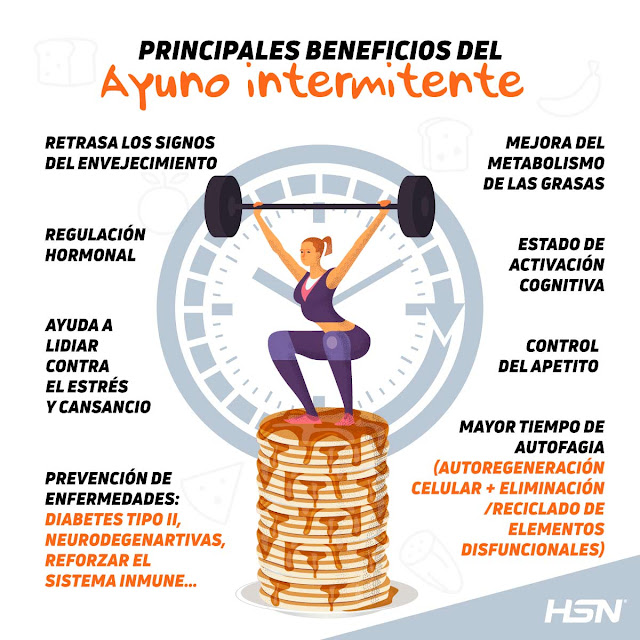q comer durante el ayuno intermitente Instituto de matemática e informatica: ayuno intermitente para
If you’re looking to switch up your diet and try something new, you may want to consider intermittent fasting. This eating pattern has become increasingly popular in recent years, with many claiming it has numerous benefits for both physical and mental health. In this post, we’ll explore the concept of intermittent fasting and provide you with a sample meal plan to help you get started.
What is Intermittent Fasting?
Intermittent fasting involves cycling between periods of eating and fasting. It doesn’t necessarily dictate what foods you should or shouldn’t eat, but rather when you should eat them. There are several ways to practice intermittent fasting, but one of the most popular methods is known as the 16:8 diet. This involves fasting for 16 hours each day and eating within an 8-hour window.
 What are the Benefits of Intermittent Fasting?
What are the Benefits of Intermittent Fasting?
Research has suggested that intermittent fasting can have a range of benefits for our health. These may include:
- Weight loss: As you’re eating within a restricted window of time, you may consume fewer calories overall.
- Improved blood sugar control: Intermittent fasting may help regulate blood sugar levels and improve insulin sensitivity.
- Reduced inflammation: Fasting has been shown to reduce inflammation in the body, which is linked to a range of health conditions.
- Improved brain function: Some studies have suggested that intermittent fasting can improve cognitive function and reduce the risk of age-related cognitive decline.
- Reduced risk of chronic diseases: Intermittent fasting has been linked to a reduced risk of heart disease, Type 2 diabetes, and some forms of cancer.
Sample 16:8 Meal Plan
If you’re new to intermittent fasting, it can be helpful to have a meal plan to get started. Here’s an example of a meal plan for the 16:8 diet:
8 AM:
- Black coffee or tea (no milk or sugar)
- Two boiled eggs
- Half an avocado
- Whole-grain toast
12 PM:
- Grilled chicken breast
- Roasted sweet potato
- Steamed vegetables (broccoli, carrots, etc.)
 ### 3 PM:
### 3 PM:
- Apple or banana with almond butter
- Handful of almonds or other nuts
6 PM:
- Salmon fillet
- Quinoa or brown rice
- Green salad with olive oil dressing
Remember, these are just examples - you can adapt the meal plan to suit your own tastes and schedule.
Conclusion
Intermittent fasting is a flexible and straightforward eating pattern that has been shown to have numerous benefits for our health. If you’re considering giving it a go, make sure to consult with your doctor first, particularly if you have any underlying health conditions.
If you are searching about ¿Cuáles son los beneficios del ayuno intermitente? you’ve visit to the right place. We have 5 Images about ¿Cuáles son los beneficios del ayuno intermitente? like Pin en Salute, ¿Cómo se hace el ayuno intermitente? - Sundt Nutrition and also ¿Cuáles son los beneficios del ayuno intermitente?. Here you go:
¿Cuáles Son Los Beneficios Del Ayuno Intermitente?
 ienutricion.com¿Cómo Se Hace El Ayuno Intermitente? - Sundt Nutrition
ienutricion.com¿Cómo Se Hace El Ayuno Intermitente? - Sundt Nutrition
 www.sundt.esDieta Ayuno Intermitente: Menú Semanal Para El Ayuno 16:8 Y Para El
www.sundt.esDieta Ayuno Intermitente: Menú Semanal Para El Ayuno 16:8 Y Para El
 www.cuerpomente.comInstituto De Matemática E Informatica: Ayuno Intermitente Para
www.cuerpomente.comInstituto De Matemática E Informatica: Ayuno Intermitente Para
 informaticapuntadeleste.blogspot.comPin En Salute
informaticapuntadeleste.blogspot.comPin En Salute
 www.pinterest.comayuno intermitente cetogenica adelgazar comer horas recetas kilos saludable bajar alimenticio efectivo qué dietas consiste pravia nutrición equilibrada ninguna
www.pinterest.comayuno intermitente cetogenica adelgazar comer horas recetas kilos saludable bajar alimenticio efectivo qué dietas consiste pravia nutrición equilibrada ninguna
Pin en salute. ¿cómo se hace el ayuno intermitente?. Ayuno intermitente cetogenica adelgazar comer horas recetas kilos saludable bajar alimenticio efectivo qué dietas consiste pravia nutrición equilibrada ninguna